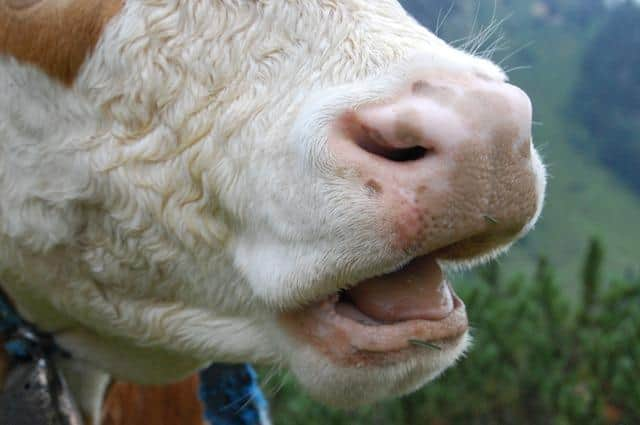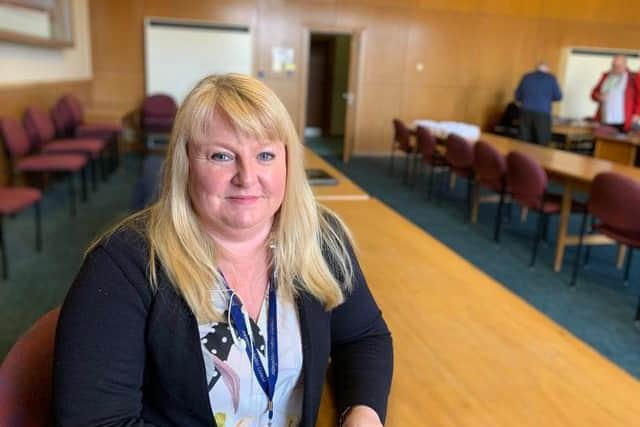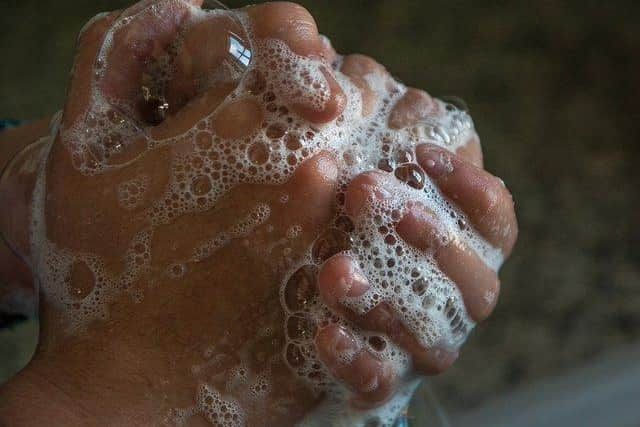How lessons learned from foot and mouth outbreak are helping tackle coronavirus


Almost 20 years ago Britain was in the grip of a health crisis, but instead of confining thousands of people to homes and hospitals as Coronavirus has, it shut down the nation’s farms.
And by the time the 2001 outbreak of Foot and Mouth Disease was brought under control more than six million sheep, cattle and pigs had been slaughtered to stop its spread.
Advertisement
Hide AdAdvertisement
Hide AdThen, as now, the government faced a backlash over what was deemed by some to be sluggish response to the unfolding emergency.


But one worker at the heart of the official response in the North East thinks the lessons learned at the beginning of the millennium will serve bosses well this time around.
“All my ex Foot and Mouth colleagues must be sitting there sort of thinking ‘oh my god, there’s so many similarities in this’,” said Alison Batey, now a member of Durham County Council, but then a civil servant dispatched to help set up a new disease control centre for the North East.
“If we ended up with, heaven forbid, an outbreak in this region, the people involved would kick-in in the same sort of way as during Foot and Mouth.
Advertisement
Hide AdAdvertisement
Hide Ad“They weren’t there before Foot and Mouth, but the Civil Contingencies Secretariat was set up on the back of all of these emergencies that we had had, so there are protocols.”


‘Horrific and emotional’
Batey, who now represents the county council’s Pelton division, was then working in the now defunct Government Offices for the English Regions and arrived at Kenton Bar, in Newcastle, to set up an inquiry point the same day it was visited by then Labour Prime Minister Tony Blair.
“At that point BT were in because it was the old military hospital at Kenton bar and they were literally running down corridors with massive things of cable to cable up,” she said.
“I was shown to a room and in the middle of that room there were unassembled 18 flat packs and I was told that was my desks.”
Advertisement
Hide AdAdvertisement
Hide AdEven now she says she can’t fully describe ‘how intense it was when you went in there’, working in a small office with a team of almost 20 answering the phone from anyone who rang, whether members of the public or government departments.
She remembered: “There were absolutely horrific calls coming in, massively emotional calls.
“We had farmers threatening to commit suicide, we had farmers that were ready to pass the farm over to their sons or daughters.
“And it wasn’t just cows, pigs and sheep, it was llamas, it was deer, it was all hoofed animals.”
Advertisement
Hide AdAdvertisement
Hide AdOfficially there were 2,000 recorded cases of Foot and Mouth in the UK, with each confirmation requiring that farm’s entire livestock to be killed and burned.
From the first instance at a slaughterhouse in Essex in February 2001 the disease spread throughout Britain, both by air and on contaminated clothing and vehicles, as well as other animals.
Veterans returning to help
Just like COVID-19 has seen a call for former doctors and nurses to return to health care to fight the pandemic, vets were brought out of retirement to join the fight against Foot and Mouth, some of who had worked on the UK’s previous outbreak in 1967.
But it was efforts to map the spread of the virus which Batey thinks was vital in turning the tide.
Advertisement
Hide AdAdvertisement
Hide AdShe said: “The key element was the epidemiologists, which is your tracing team, which even at that point in time was in a separate cabin.
“They were kept separate from the rest of us, you have clean and dirty zones, because of containment of disease.
“Foot and Mouth, in many cases, is quite similar [to Coronavirus], in that you are going to have the same sort of rules apply and your clean and dirty areas.”
The North East and Cumbria ended up being one of parts of the country most affected by Foot and Mouth, with the start of the outbreak eventually traced to Northumberland and the final confirmed case found at a farm near Appleby, in Cumbria.
Advertisement
Hide AdAdvertisement
Hide AdAnd Batey thinks a North-South divide could see northern England spared the kind of spread expected in more populous areas, such as London.
But mostly she is confident the lessons learned after the 2001 Foot and Mouth have left a legacy which will be vital this time around.
“I’m not in any doubt whatsoever there will be plans in place, I’m absolutely reassured of that,” she said.
“You might have issues when it becomes cross border, across authority areas, but at that point there will probably be the Local Resilience Forums, or equivalent or whatever they are now, kicking into force.”
Advertisement
Hide AdAdvertisement
Hide AdShe added: “I think pretty much anybody that works in emergency planning has that ability to look at the what-ifs, it’s your natural instinct.
“You’re told something and you think, right okay, what if this happens, what if that happens, which isn’t a natural thing for a lot of people.”
‘I nearly fell off the table’
“I was stood on a table, trying to get the grid references off a map on the wall,” said Alison Batey.
“During foot mouth, and they do it exactly the same in any emergency situation, they do a restricted infected area via a road, railway line or river – that’s how you create a restricted infected area.
Advertisement
Hide AdAdvertisement
Hide Ad“I wanted the restricted infected area extended and because of what the epidemiologist had been telling me I wanted to move ahead of it.
“So I was literally standing on a table, going through these grid references with this absolutely obnoxious, toffee-nosed person in London, who was telling me that they hadn’t had the authority to be able to do it.
“I was saying ‘that’s what I’m asking for, go and get the authority to extend this’ and having been an absolute nightmare.
“Unbeknown to me, my boss was standing outside the door with this person, I still don’t know who he was today, and he shouted through the door ‘are you having a problem Alison?’.
Advertisement
Hide AdAdvertisement
Hide Ad“I nearly fell off the table, thinking I’m gonna’ get rollocked health and safety wise here, and said ‘yes, I’m getting nowhere’.
“I don’t know who he was, but this person said pass me the phone, said who he was, as I gingerly got down from the table, and told them just do it.”